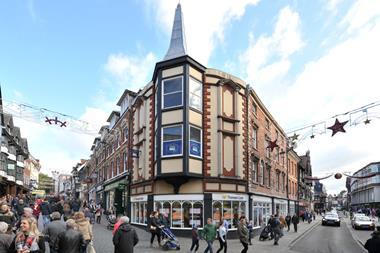Retail property businesses are fast going digital in order to meet the growing demands of their tech-savvy customers.

The future shape, style and methodology of retailing is changing in ways we have yet to fully understand.
This will mean undergoing a structural transition in which the consequences of getting the timing wrong or investing in technology and processes without an insightful, integrated strategy could be disadvantageous.
Fortunately, landlords have for some time recognised the need to innovate digitally. To this end, they have developed sophisticated data collection systems to better analyse and understand customer information.
However, the new EU General Data Protection Regulation, which comes into force in May 2018, is aimed at protecting customers’ data and will make it more difficult to gather. This will force landlords to develop more direct relationships with retailers as a source of market insight.
Retailers themselves are adapting their models to align them with changing customer behaviour.
One online retailer using digital insight to determine its store strategy is Missguided. It not only has an excellent understanding of the market via its internet database but it also understands that taking on physical stores will require exceptional customer service.
Meanwhile, Next is creating its first flagship childrenswear store, in the Centrum Chodov shopping centre in the Czech Republic, a decision dictated by online childrenswear sales in previous years far exceeding expectations.

The changing structure of department stores is another area of focus. With the advance of digital they will need less space to display fewer products in the future. John Lewis’s ideal store size has reduced from 250,000 sq ft to 150,000 sq ft in the past 10 years.
This could reduce to 100,000 sq ft in the next five years, although the space would need to be better curated and customer service dramatically improved.
Nordstrom plans to open a new concept store of 3,000 sq ft, a fraction of its typical size, where shoppers will be able to enjoy a manicure or onsite tailoring. All this suggests we could be seeing a return to the traditional approach to customer service.
Creating experience
The successful retailers and landlords will be those who use technology intelligently to respond to their customers’ demands. Stores and shopping centres will need to become much more customer oriented - selling environments and hospitality will be vital.
This approach is demonstrated by the outlet model, of which Bicester Village in Oxfordshire is an outstanding example. Having its own railway station with an exceptional customer service lounge makes the customer journey a delight. Added to the mix are high-quality pop-ups such as Liberty and Bamfords, all set in beautiful landscaping devised by renowned florist Nikki Tibbles from Wild at Heart.
Find out more: Why we haven’t heard the last of the US mall
The retail property industry has realised that creating experiences and providing more mixed uses requires a diverse range of skills. This was a subject of discussion at an International Council of Shopping Centers CEO Forum I recently attended in Salzburg, alongside the need to build retailer relationships at all levels.
Technology will continue to evolve while the importance of landlords maintaining excellent relationships with retailers will become ever more significant, especially as customer data becomes a restricted yet vital commodity.





























No comments yet